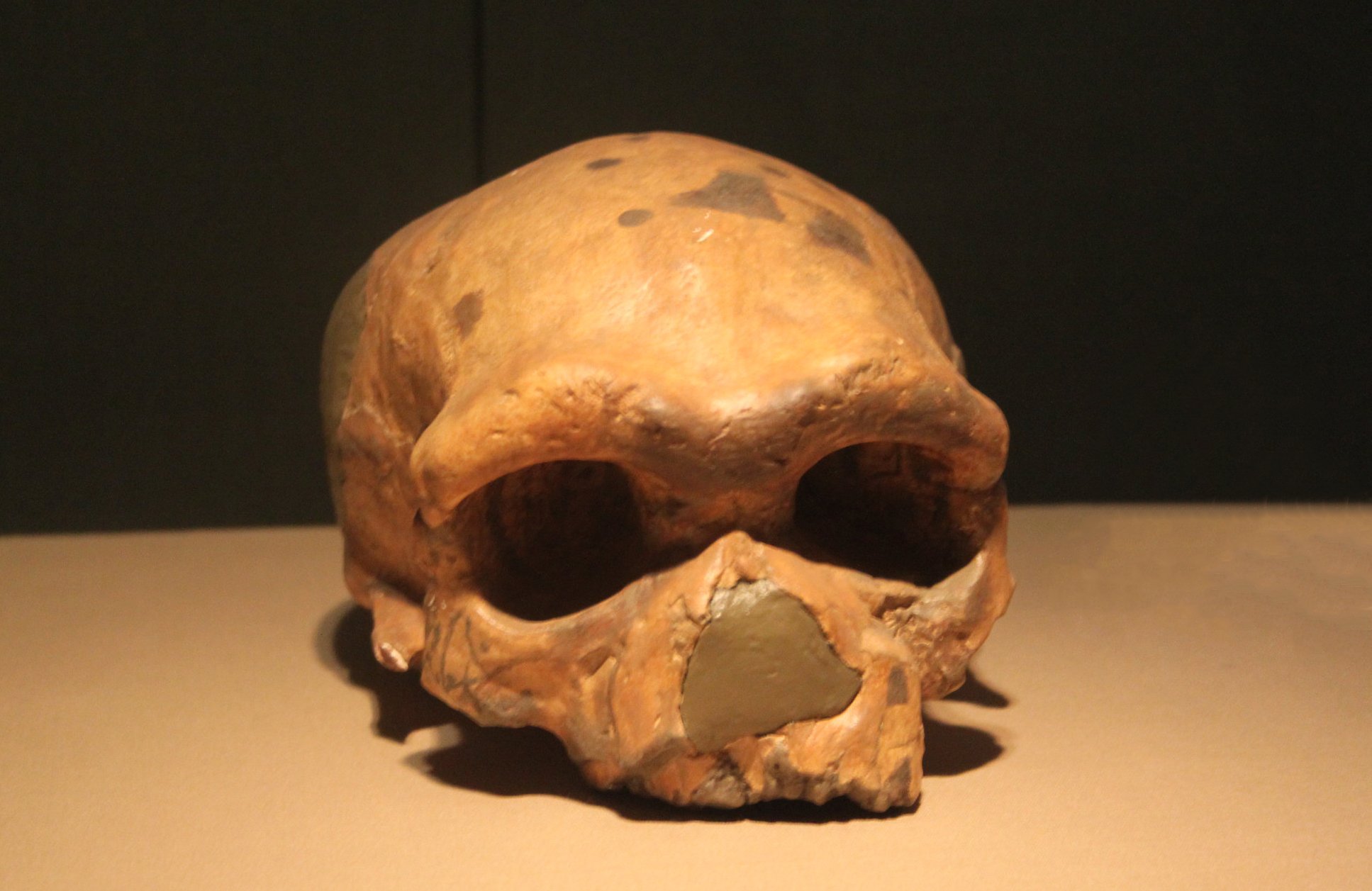
Paleoanthropologists have reportedly discovered what they claim to be a new hominin species in northeastern China. The skull was discovered outside of Harbin, and has a combination of features so divergent from Homo sapiens, Denisovans, and Neanderthals, that researchers believe it constitutes its own species and that this species should be named Homo Longi, or “Dragon Man.”
This name has nothing to do with any resemblance between the skull and a dragon, however. It originates from the area the skull was discovered in: Heilongjiang, which is Black Dragon River in English.
The origins of Homo Longi, aka Dragon Man
The Dragon Man is 146,000 years old and lived during the Middle Pleistocene. The Middle Pleistocene denotes the era of the Pleistocene, commonly referred to as the ice age, when homo sapiens began to emerge, between 300 ka and 400 ka. The Dragon Man was believed to be around fifty years old when he died and was large-framed.
Paleoanthropologists believe that the size and strength of the Dragon Man allowed him to weather harsh conditions and climates, making Homo longi more capable of traversing across Asia, where paleoanthropologists believe they may have interacted with Homo sapiens.
“We see multiple evolutionary lineages of Homo species and populations coexisting in Asia, Africa and Europe during that time. So, if Homo sapiens indeed got to East Asia that early, they could have a chance to interact with H. longi, and since we don’t know when the Harbin group disappeared, there could have been later encounters as well,” said paleoanthropologist Chris Stringer, who is part of the team that discovered the Dragon Man and works at the Nature History Museum in London.
The Dragon Man’s skull was discovered by Stringer and fellow paleoanthropologists Xijun Ni and Qiang Ji with support from other colleagues. Ni says that the Dragon Man dates our Neanderthal ancestors even further back in history than paleoanthropologists had previously believed.
“It is widely believed that the Neanderthal belongs to an extinct lineage that is the closest relative of our own species,” Ni said. “However, our discovery suggests that the new lineage we identified that includes Homo longi is the actual sister group of H. sapiens…The divergence time between H. sapiens and the Neanderthals may be even deeper in evolutionary history than generally believed, over one million years.”
Dragon Man, a new species
According to Ni, the Harbin cranium will further guide us in our understanding of not only Homo diversity but also evolutionary relationships between the various populations of the Homo species, and we can can say with near certainty that we have identified the sister lineage of the Homo sapien.
Ni and his team are adamant that the Dragon Man represents its own species, but the evidence that Homo longi crossed paths with Homo sapiens, as well as the similarities between them, suggests that there may not be quite enough differences to distinguish Homo longi just yet.
The Dragon Man’s skull has sparked a debate about what constitutes its own species and what may be a hybrid. The Dragon Man is said to have features, specifically his jaw, that strongly resemble that of Denisova hominins, but researchers insist that the combination of features on the Dragon Man’s skull has never before been seen.
See all the latest news from Greece and the world at Greekreporter.com. Contact our newsroom to report an update or send your story, photos and videos. Follow GR on Google News and subscribe here to our daily email!



